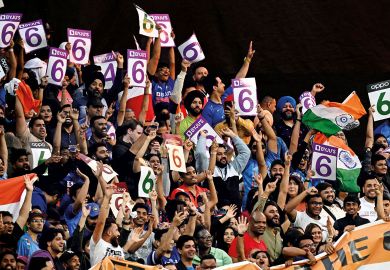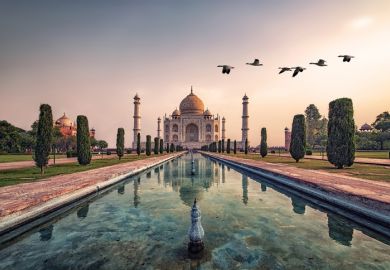“As they say in India,” the economist Pranab Bardhan wrote in an influential paper on corruption, “in the US corruption is in the process of ‘making’ laws, in India it’s mostly in ‘breaking’ laws.”
While Bardhan cites legally approved paths of US campaign finance that would be illegal in most countries, his remark makes me think of the different ways in which higher education is being corrupted in the two countries.
In the US, structural forces – demography and economics – are undermining colleges’ bottom lines and causing students and parents to question the value of degrees. In India, meanwhile – where those forces are very much in the country’s favour – individuals, politicians and ideologies are doing a great job of squandering what could have been a golden period of higher education through flagrant violations of institutional norms.
Facing a $45 million (£35.3 million) shortfall, West Virginia University, the flagship university of the state, recently became the latest US institution to announce deep cuts. It will eliminate 9 per cent of its total majors – 32 in all – which will allow it to lay off 169 faculty members, 7 per cent of the total, with the cuts concentrated in the humanities and the social sciences. Yet even though Republican politicians have contributed to the ideological disavowal of the humanities, the larger reasons behind the enrolment crisis seem almost historically inevitable.
The biggest of these is the post-2008 decline of the college-age population, projected to bottom out in 2025. The other reason is the astronomical rise in the cost of college in the US, most radically in private institutions, which has encouraged people to question whether the payoff from a degree is really worth the investment. In the 1980s, Peter Drucker observed the rapid transformation of manufacturing cultures in the US into what he termed a “knowledge society”, for success in which a college education was indispensable. But where there is not a direct path from a degree to a high-paying career, scepticism about that necessity is rising.
The situation in India, and Asia more generally, is almost the opposite of this. It has money and school-leavers aplenty, but it is caught in a trap of its own. Its economy and students are crying out for innovative, interdisciplinary higher education of the kind that US liberal arts colleges specialise in. Yet its leaders reject the moral and political freedom that comes with such education. The desire for and the eventual collapse of the Yale-NUS collaboration bears witness to this contradiction.
A great ambition for broad, multidisciplinary, liberal education is written all over India’s National Education Policy, published in 2020. But the central government has shown entrenched opposition to intellectual and political freedom on campus and in research.
The country’s exploding number of young people, many of them seeking urban life and upward mobility, ensures that even the shoddiest outfit going by the name of an educational institution fills its seats in no time. Witness the massive profits made by controversial online content deliverers such as BYJU’s, and now the millions of examinees worrying about their university places after an arbitrarily structured new Central University Entrance Test was mandated for college admissions nationwide.
The US problem of high tuition fees has also been historically absent from India thanks to a broad landscape of affordable public universities, albeit of uneven quality. Even the fees of the new elite private universities are negligible compared with fees overseas; for the nation’s large middle and upper-middle class, they are affordable local alternatives to education abroad.
Abundant demand and low costs, combined with the high value placed on education by India’s middle class – a source of high-quality students and committed teachers – should have been the making of higher education in India, as indeed seemed possible in the early 2010s.
Yet the destruction of public universities through political interference and suppression is already a well-known fact. Such institutions face a wave of attacks, including defunding, political appointments, curriculum cuts and, of course, suppression of free thought.
Meanwhile, a new wave of digital and investment entrepreneurs created the natural space for financially independent private universities – profiteering outfits as well as genuinely philanthropic operations. But the dangers of making a critique even in spaces financially independent of the government are foregrounded by repeated turmoil at my own institution, Ashoka University – over a petition against military atrocities in Kashmir in 2016, the resignation of a public intellectual critical of the government in 2021 and, most recently, attacks on an economist’s research paper documenting irregularities in the 2019 parliamentary elections.
Perhaps it could be argued that the rise of intolerant fundamentalisms around the world is also a historical inevitability. But as an educationalist, particularly as one who has moved between worlds, what I see here is the greatest missed opportunity one can possibly imagine.
Saikat Majumdar is professor of English and creative writing at Ashoka University.
Register to continue
Why register?
- Registration is free and only takes a moment
- Once registered, you can read 3 articles a month
- Sign up for our newsletter
Subscribe
Or subscribe for unlimited access to:
- Unlimited access to news, views, insights & reviews
- Digital editions
- Digital access to THE’s university and college rankings analysis
Already registered or a current subscriber?








